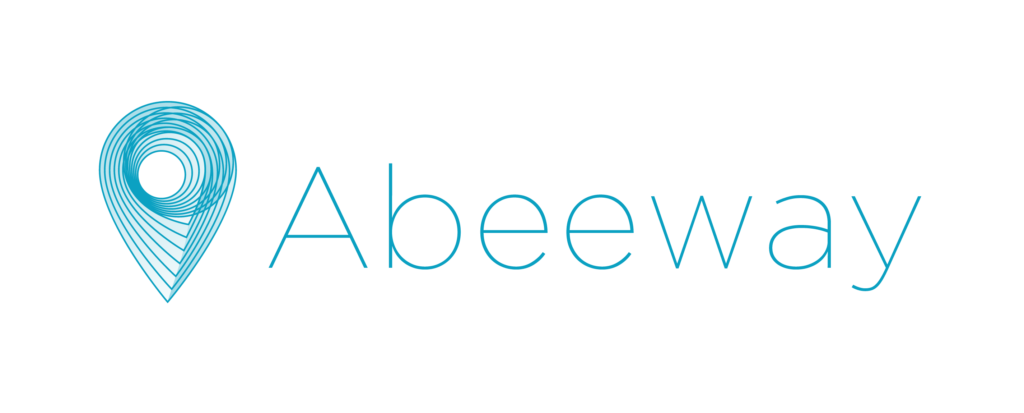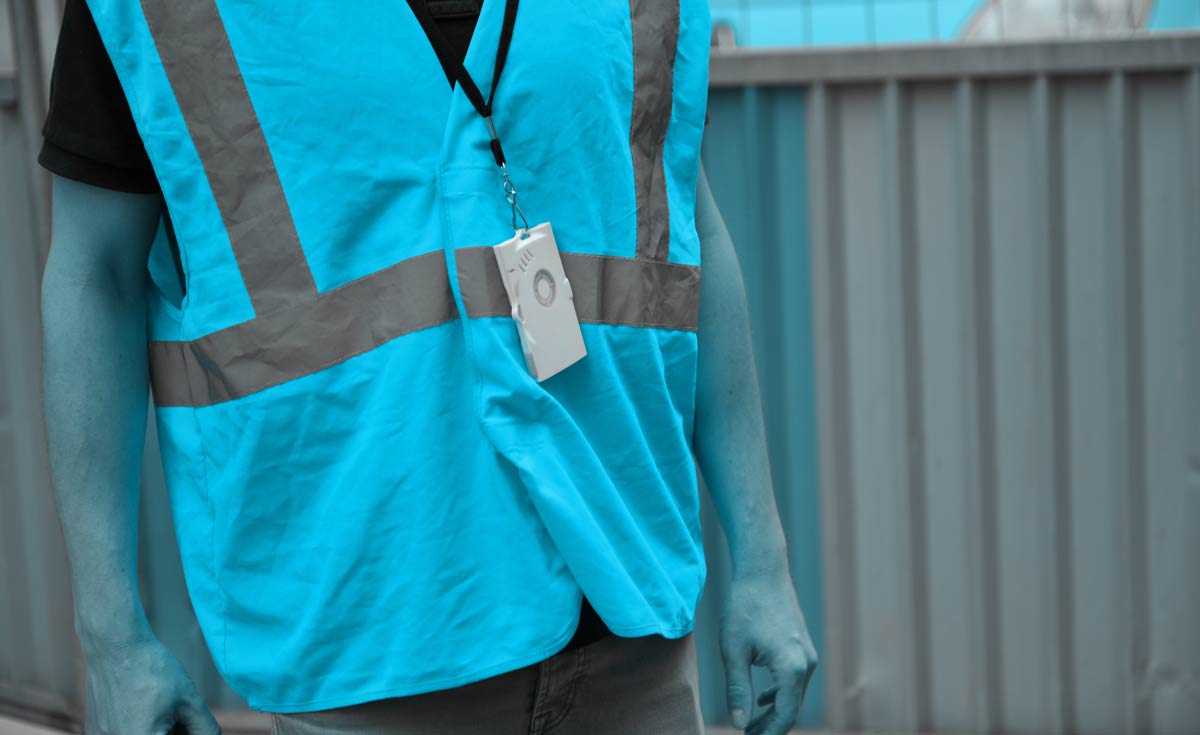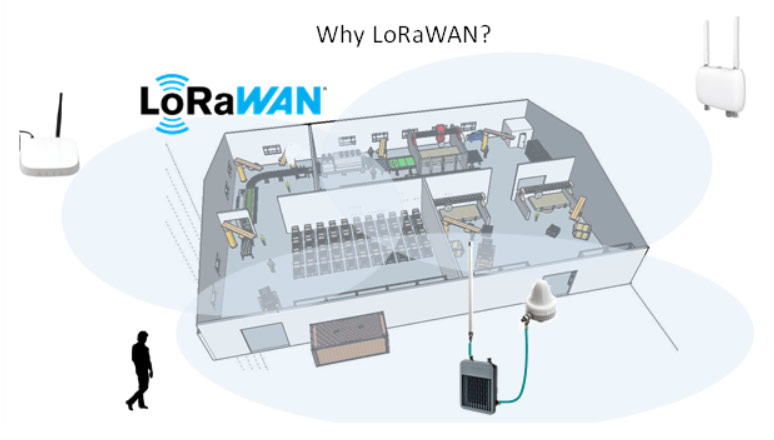

During the current times and as the second wave of Covid-19 is ramping-up, we must take severe protection measures to care for ourselves and the people around us. This not only applies to our family members and friends, but also to those who we work with. Workers are an organization’s most valuable asset; therefore, proximity policies must be enforced in enterprises in order to help prevent Coronavirus from spreading and comply with mandatory safety measures. This is crucial to keep a healthy work environment and to avoid costly temporary shutdowns. This issue is what led Actility to put its IoT expertise in geolocation and network management to work to create a digital Proximity Detection & Contact Tracing Solution.
Covid-19 sanitary policies focus on two main goals: enforcement of distancing policies, and rapid and immediate identification of contamination clusters in case of confirmed infection.
Wearable devices, conveniently packaged as ID Badge holders have been designed to help ensure compliance with social stance guidelines while on a job site or at a workplace, where essential work might need to continue despite the ongoing global coronavirus pandemic, but where it can also be tricky to maintain a proper distance between workers without a reminder system.

When the Smart Badge records two or more people exceeding the safety limit, the badge will warn the worker by two levels of audible feedback (warning and immediate danger) or through a visual alarm.
The badges are connected via LPWAN network to a back-end sanitary policy management application which generates statistics that help identify areas where close contacts occur – e.g. corridors – and help in the continuous improvement of office or factory floor optimization. The badges implement edge processing considering both distance and time, so workers will be warned, and contact registered even if they stay within 5 or 6 feet, but for too long.
This compliance solution protects workers by ensuring secure social distancing, but it is also protecting the continuity of corporate operations and – by avoiding costly full shutdowns- provides instant RoI. Temporary business shutdowns are necessary when companies are not able to trace contacts, so for precaution operations need to stop until each worker has been tested and provided with negative results, which tends to extend to a full week for each case and causes significant losses as well as unpredictable delivery delays.
Digital contact tracing is achieved by connected badges that report every contact to a central sanitary policy management system, where they are saved for 2 weeks. When a Coronavirus infection is detected, instant back-tracing allows to identify only those workers who have been in close contact with the infected person and limit testing to this cluster only, which minimizes disruption to operations. In addition, several studies have shown that rapid identification of a cluster is essential to prevent propagation, as anyone in the cluster may also start to propagate the virus. With instant back-tracing, propagation gets under control even with a 60% to 70% success rate in effectively isolating the subject contacts.
In order to limit the number of potential contacts, the solution also supports zoning policies. This may be organized as distinct work zones, helping workers remain within their assigned area by audio notification, or by organizing shifts. The system can optionally inform management if workers repeatedly violate such zoning policies.
Compliance & enforcement of maximum density policies can also be implemented through this solution by audio warning when the maximum density of workers is reached in a specific shared area. The solution is also capable of optimizing sanitation of shared assets by analyzing usage in real-time and ensuring compliance while triggering cleaning only when needed.


LoRaWAN® is the Low-Power Wide Area Network (LP-WAN) technology enabling this digital sanitary policy enforcement and traceability solution.
LoRaWAN® is a global communication standard developed by the LoRa Alliance. It allows long-range wireless communication at a low data rate, reducing power and cost for transmission, and targeting key IoT requirements such as bi-directional communication, end-to-end security, mobility, and localization services.
In the context of this use case, the key features of LoRaWAN® are its support for macro-diversity, i.e. within a building all antennas, indoor and outdoor, collaborate to create seamless coverage even for mobile assets. Unlike mesh networks that need to self-optimize for a given asset location and therefore cannot connect mobile devices, the LoRaWAN® Badges work indoors and outdoors, anywhere in the facilities. The Actility ThingPark network server leverages the link quality information received from all gateways to dynamically select the antennas used and optimize indoor & outdoor radio quality.
If additional antennas need to be installed to ensure full coverage of underground and other hard to reach areas, no configuration or radio planning is needed, the ThingPark platform automatically reorganizes the network to leverage all available antennas and increase coverage and capacity. This makes LoRaWAN® the ideal technology for proximity and contacts back-tracing solutions, as it is easy to install and configure, requires few gateways due to long-range and excellent indoor penetration of the sub-GHz spectrum scales easily, and works indoor & outdoor for fixed and mobile devices.
While Covid-19 is the immediate priority and likely to remain so during H1 2021, companies are also mindful that any investment needs to be preserved after COVID. LoRaWAN® is an open technology that thousands of devices already available in the ecosystem and the same LPWAN network can be leveraged for sub-metering, predictive maintenance, and hundreds of other use cases. Likewise, the Smart Badge offers future-proof features that cover worker safety (evacuation monitoring, man-down, lone worker SoS), security (visitor tracking, geofencing of danger zones), and can be complemented with other LoRaWAN trackers with form factors optimized for asset & tool tracking.
LoRaWAN® is the Low-Power Wide Area Network (LP-WAN) technology enabling this digital sanitary policy enforcement and traceability solution.
LoRaWAN® is a global communication standard developed by the LoRa Alliance. It allows long-range wireless communication at a low data rate, reducing power and cost for transmission, and targeting key IoT requirements such as bi-directional communication, end-to-end security, mobility, and localization services.
In the context of this use case, the key features of LoRaWAN® are its support for macro-diversity, i.e. within a building all antennas, indoor and outdoor, collaborate to create seamless coverage even for mobile assets. Unlike mesh networks that need to self-optimize for a given asset location and therefore cannot connect mobile devices, the LoRaWAN® Badges work indoors and outdoors, anywhere in the facilities. The Actility ThingPark network server leverages the link quality information received from all gateways to dynamically select the antennas used and optimize indoor & outdoor radio quality.
LoRaWAN® is the Low-Power Wide Area Network (LP-WAN) technology enabling this digital sanitary policy enforcement and traceability solution.
LoRaWAN® is a global communication standard developed by the LoRa Alliance. It allows long-range wireless communication at a low data rate, reducing power and cost for transmission, and targeting key IoT requirements such as bi-directional communication, end-to-end security, mobility, and localization services.
In the context of this use case, the key features of LoRaWAN® are its support for macro-diversity, i.e. within a building all antennas, indoor and outdoor, collaborate to create seamless coverage even for mobile assets. Unlike mesh networks that need to self-optimize for a given asset location and therefore cannot connect mobile devices, the LoRaWAN® Badges work indoors and outdoors, anywhere in the facilities. The Actility ThingPark network server leverages the link quality information received from all gateways to dynamically select the antennas used and optimize indoor & outdoor radio quality.